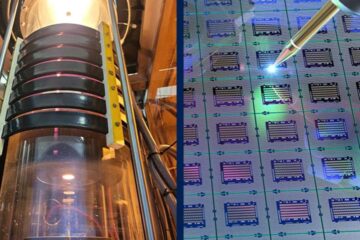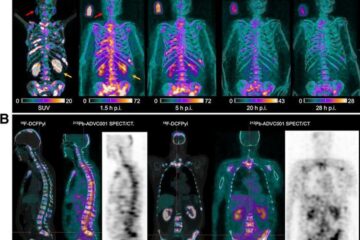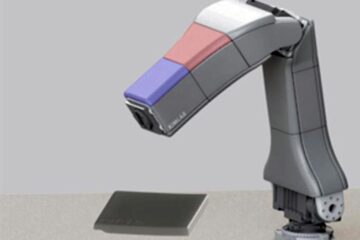Scientists use space to study how earthquakes turn solid soil into shifting sands

Nothing seems more down-to-Earth than dirt, but scientists are going to space to understand how earthquakes and related strains and stresses disturb soil and sand.
When Space Shuttle Columbia lifts off in January, it will carry the Mechanics of Granular Materials (MGM) experiment, which studies soil behavior under conditions that cannot be duplicated on Earth — the microgravity, or low-gravity created as the Shuttle orbits Earth.
Results from this granular mechanics research can lead to improved foundations for buildings, management of undeveloped land, and handling of powder or granular materials used in chemical, agricultural and other industries.
“Even in North Alabama, we experienced an earthquake tremor last year,” said Buddy Guynes, the experiment’s project manager at NASA’s Marshall Space Flight Center in Huntsville, Ala. ” This experiment is relevant to our lives on Earth. At NASA, we also want to know how soil behaves at different gravity levels, so one day crews can safely build habitats on Mars and the Moon.”
How do earthquakes and other geological activities, like mining, impart stress to soil causing it to literally become shifting sand? As an earthquake strikes, it deforms the soil, changing the volume of the soil. If water is present, water pressure may build up in the pore space between the soil grains. What was once a solid foundation begins to flow like a liquid, a process called soil liquefaction. As the soil moves, foundations become unstable, and Earth’s gravity wins out — collapsing buildings, bridges and other structures.
Earth’s gravity also makes it difficult for scientists to study the precise physics of granular mechanics and soil liquefaction.
“On Earth, gravity-induced stresses quickly change the amount of weight, or loads, a foundation can support,” said Dr. Stein Sture, the experiment’s principal investigator at the University of Colorado at Boulder. “We can use space-based research to perform detailed analyses to understand the physics that causes water- saturated, but initially firm foundation soil, to suddenly flow like water.”
The strength of sand or any particulate material depends on how the granular assembly is packed together and interlocked. Moisture or air trapped within or external loads on the site help determine its weakness or softness. Cyclic loading and instabilities can cause the soil to loosen and collapse under the stress of earthquakes or other pressures.
“Computer tomography scans will produce a series of images that help us study the minute details of individual grains of sand and how they interact with each other,” said Sture. “We can examine the particle arrangement and structure of soils and learn about the strength, stiffness and volume changes that occur when low pressures are applied to granular materials.”
For the STS-107 experiment, three sand columns held inside latex sleeves will be used for nine experiment runs. Ottawa sand — natural quartz sand with fine grains widely used for civil engineering experiments — will be saturated with water to resemble soil on Earth. Each column holds about 1.3 kilograms (2.8 pounds) of Ottawa F-75 banding sand.
The flight crew will use a laptop computer to send commands to the experiment, causing the sand to be compressed between two tungsten metal plates. As the sand is compressed and relaxed, a load cell will measure the applied force, and three CCD cameras will record changes in shape and position of the soil inside the column. This compression and relaxation will simulate the loads that might be imparted to soil via earthquakes and other external forces.
The three columns will be used for nine tests or observations periods. Upon completion of each run, the samples will be expanded and stretched back to their original length to create a homogenous mix of sand and water at the start of each run.
When the Shuttle lands, the sand columns will be imaged using computer tomography at laboratories at NASA’s Kennedy Space Center in Florida. Then, they will be injected with epoxy, and the columns will be sawed into thin disks. These will be sent to experiment investigators in Colorado and Louisiana for inspection under an optical microscope.
“Our earlier flights showed gravity masked measurements of friction between grains of sand,” said Dr. Khalid Alshibli, project scientist for the experiment and professor of civil engineering at Louisiana State University and Southern University in Baton Rouge. “This is an important factor in determining the amount of weight the soil can support.”
The Mechanics of Granular Materials experiment has flown twice — on Space Shuttle missions STS-79 in 1996 and STS-89 in 1998. These investigations revealed soil specimens were two-to-three-times stronger and much stiffer than scientists had predicted. The16-day STS-107 flight aboard Columbia gives scientist an opportunity to perform longer, more complex experiments. Future experiments will benefit from extended tests aboard the International Space Station, including experiments under simulated lunar and Martian gravity in a science centrifuge.
“We anticipate valuable results from the STS-107 experiments,” said Alshibli. “We are using a novel specimen reformation technique that enables us to use the same specimen for more than one experiment run. This lays the foundation for more extensive, long-term soil research that can be carried out on the International Space Station.”
In addition to the Mechanics of Granular Materials experiment, Columbia will carry 29 more investigations sponsored by NASA’s Office of Biological and Physical Research. These peer-reviewed and commercial experiments will advance knowledge in medicine, fundamental biology, fluid physics, materials science and combustion. The STS-107 mission is a dedicated science mission recommended by the National Research Council and approved by the U.S. Congress. With more than 80 investigations, it builds on prior multidisciplinary Shuttle science missions and serves as a prelude to long-duration investigations that will be possible as science capabilities grow on the International Space Station.
Media Contact
All latest news from the category: Earth Sciences
Earth Sciences (also referred to as Geosciences), which deals with basic issues surrounding our planet, plays a vital role in the area of energy and raw materials supply.
Earth Sciences comprises subjects such as geology, geography, geological informatics, paleontology, mineralogy, petrography, crystallography, geophysics, geodesy, glaciology, cartography, photogrammetry, meteorology and seismology, early-warning systems, earthquake research and polar research.
Newest articles

Silicon Carbide Innovation Alliance to drive industrial-scale semiconductor work
Known for its ability to withstand extreme environments and high voltages, silicon carbide (SiC) is a semiconducting material made up of silicon and carbon atoms arranged into crystals that is…

New SPECT/CT technique shows impressive biomarker identification
…offers increased access for prostate cancer patients. A novel SPECT/CT acquisition method can accurately detect radiopharmaceutical biodistribution in a convenient manner for prostate cancer patients, opening the door for more…

How 3D printers can give robots a soft touch
Soft skin coverings and touch sensors have emerged as a promising feature for robots that are both safer and more intuitive for human interaction, but they are expensive and difficult…




















